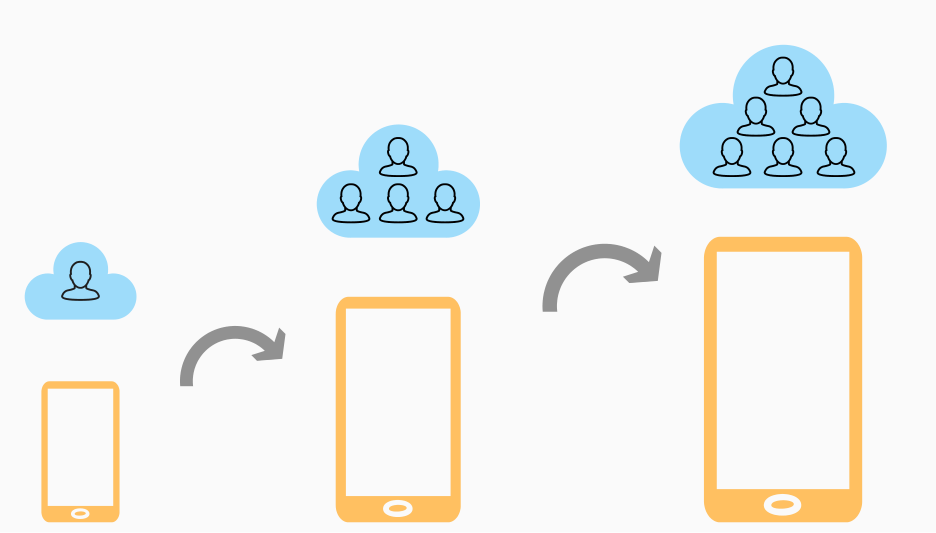Scaling for Success: Why Scalability Is the Forefront of Modern Applications
The article explores why scaling software applications is vital today, the disadvantages of neglecting them, and how to make an application scalable.
Join the DZone community and get the full member experience.
Join For FreeScalability has become the biggest buzzword in the world of Modern Applications for a good reason. In short, it is the ability to handle more data, more users, and more demand without sacrificing performance, reliability, or security.
It is not uncommon to question why scalability has grabbed the attention of the masses these days. The reason is straightforward, today, applications generate enormous amounts of data. As we embrace new technologies like cloud computing, big data analysis, and the Internet of Things (IoT), there is a noticeable spike in the amount of data generated from different applications.
In a period where competition is fierce across industries, scalability has become significant for organizations seeking an edge over rivals. Getting ahead means offering quick responses that are efficient and reliable. These attributes require scalable applications designed specifically around growth requirements. Only then can organizations meet rising demand from customers who crave better services than ever before during peak periods when traffic is high. By having the ability to increase capacity on-demand through scalable apps, it enables organizations to stay plugged in at all times while ensuring uninterrupted availability.

Downsides of Neglecting Scalability
Maximizing scalability from inception plays a critical role when designing applications in current markets filled with high competition levels, where businesses strive for better service delivery while minimizing operational costs.
A recent Google research says 53% of users abandon visits if a mobile site takes longer than three seconds to load.
It is imperative to take into account the benefits gained from creating an app designed for future growth at inception compared with attempting adjustments after deployment, which could lead to some unexpected adverse events such as:
- Poor Performance: It leads to login issues or total system failure resulting in extensive damage and causing high operational costs, fueled by urgent fixes like upgrades or rewrites of the whole system. It is crucial to consider that poor performance affects user experience leading to slow loading times and frequent crashes resulting in app abandonment.
- Downtime: The surge in application usage may surpass the server's capacities, leading to potential downtime. Downtime poses considerable financial consequences, especially for companies whose revenue streams hinge on their applications.
- In 2019, Costco's website crash on Thanksgiving cost the company nearly $11m.
- In 2018, Walmart lost nearly $20,000 every second its website was down.
- Security Risks: An application's scalability significantly influences its ability to fend off online attackers, who could wreak havoc on its systems. A lack of scalability makes implementing effective and dependable security protocols somewhat challenging, leaving the app open for cybercriminals - a potential recipe for disaster.
- Higher Costs: Without scalability implemented, businesses should expect to shell out more for hardware and infrastructure as demand grows. For startups and small businesses, such increased costs pose a significant challenge.
- Inflexibility: Your application's inability to scale can hinder its adaptability to changing market conditions and consumer needs. It, in turn, has the potential to limit business expansion possibilities while overlooking new opportunities.
Key Strategies for Building Highly Scalable Applications
Distributed Architecture
To overcome challenges related to scalability, one of the most common solutions is opting for a distributed architecture. It entails dissecting an application into smaller and autonomous components that can run on multiple machines or nodes. Through this technique, the system manages an increased influx of traffic by distributing the workload across numerous servers.
Load Balancing
Load balancing is another solution for scalability that involves distributing the workload evenly across multiple servers. Load balancing helps prevent any single server from becoming overloaded and helps ensure that the application remains available and responsive.
Caching
To enhance the functionality of an application, incorporating caching into the programming strategy is also a common practice. This process involves storing commonly used data in memory, so it can be quickly retrieved as needed rather than accessing it repeatedly from slower storage systems like databases or disk drives. It enhances the scalability and efficiency of the program overall, contributing to its performance capabilities over time.
Auto Scaling
Auto-scaling is a solution that allows an application to adjust its resources based on current demand automatically. It involves setting up rules to automatically spin up or down instances based on certain thresholds, ensuring the application can handle increased traffic and higher demand.
Database Partitioning
It is also called Sharding, which is a technique used to fragment a database into independent parts and allocate them to various servers. This method helps to mitigate the workload on any single server leading to better performance and scalability.
Final Thoughts
Fundamentally speaking, scalability serves as a critical building block for contemporary applications. It has a significant impact on determining business success alongside efficiency levels and profit margins within the current digital milieu. Scalability facilitates seamless handling of rising requests made by users and effectively processing heavier traffic footprints while ensuring efficient management of rapidly growing data volumes.
Scaling up can be effortless with the right tools to handle expansive traffic, data, and demand. Take a moment to breathe, relax and embrace scalability without hesitation.
Opinions expressed by DZone contributors are their own.

Comments